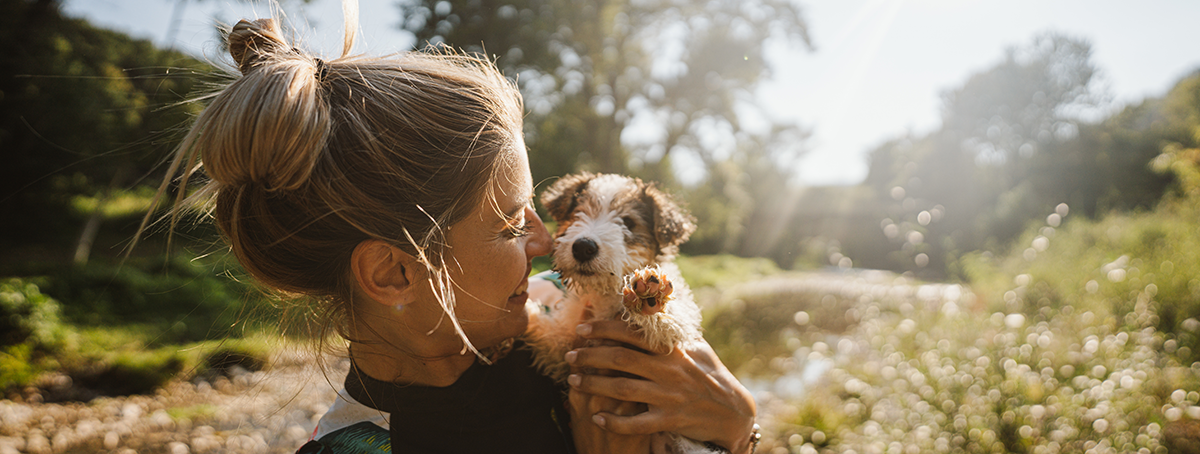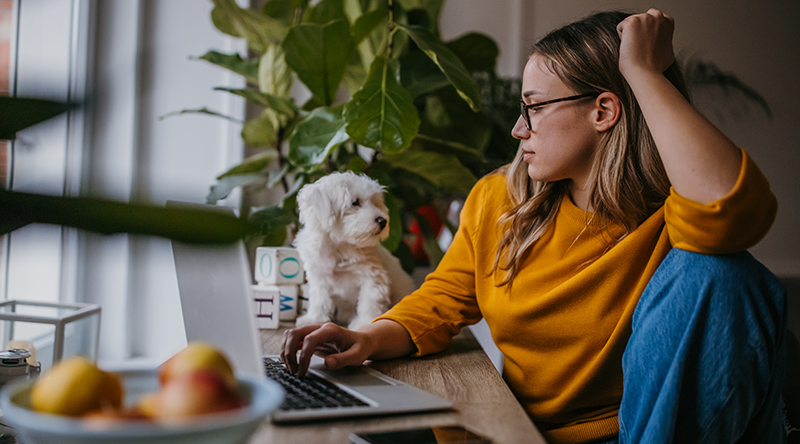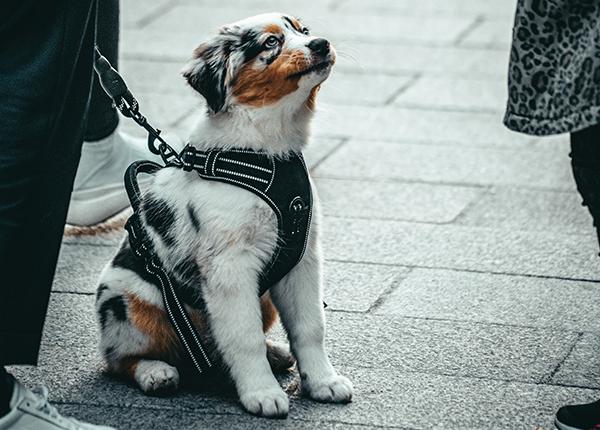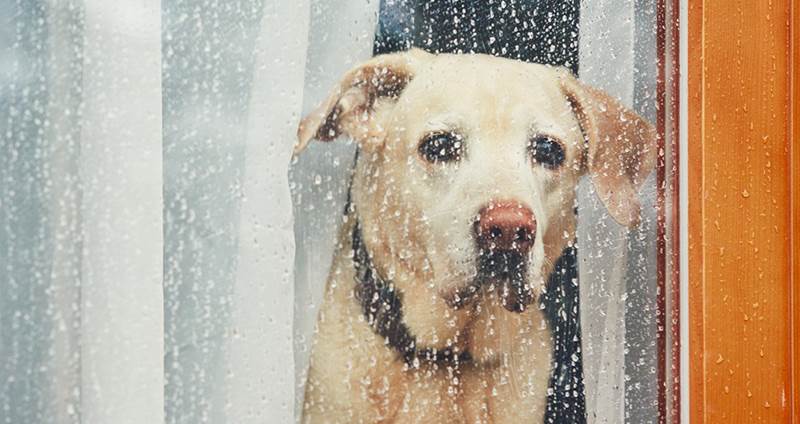Home alone during the ‘new normal’:
UNDERSTANDING AND OVERCOMING SEPARATION ANXIETY IN DOGS
Have you had to cancel a social event with friends because of your pooch’s behaviour when left alone? You’re not the only one: a recent survey shows that about 1 out of 10 pet parents turn down social plans, as they feel they can’t leave a pet who suffers from separation anxiety.1

Dogs are social animals and have a natural need to be around their pack. When left alone, some dogs may feel anxious and afraid. Additionally, dogs that have become accustomed to constant attention and interaction may experience anxiety when suddenly left alone.
It is estimated that about 20% of dogs suffer from separation-related problems.2,3 The most common signs dog owners report include destructive chewing and excessive barking or howling.2,3 Unfortunately, it is difficult to predict which dogs will develop these types of behaviours and how to prevent them from emerging. A few theories suggest that changes in household circumstances or the pet’s lack of experience being home alone at a young age may act as triggers.2
Due to past social distancing and remote work practices, many pups did not get the upbringing that they normally would have. Their exposure to new experiences, people, and to other animals was limited, and they were not trained to spend time alone.4 As people are adjusting to the ‘new normal’, pets must also adapt to the changing routines of their owners. Pet owners may work from home one day and go into the office the next. This unpredictable schedule may cause anxiety in some dogs.

The good news is that with patience, understanding, and the right techniques, it is possible to help your dog feel safe and secure. If you feel like you can’t do this alone or don’t know where to start, professional help is available!
- First, your vet should make sure your dog is not suffering from any physical illness or condition that might be causing the problematic behaviour. If there are any such conditions, they will need to be addressed first. Your vet can also recommend treatment options to help alleviate your furry friend’s anxiety.
- Second, a qualified positive-reinforcement trainer can help with behaviour modification. What works for one family in one situation will not necessarily work for another, so it’s important to get personalised help.

Here are some additional tips to help you and your dog feel less anxious when you’re not around:
- Never punish your dog for anxious behaviour, as it will increase anxiety in the future and will harm the bond between you and your dog.
- Day-care – Consider putting your dog in a doggy day-care where someone can take care of your pup while you are gone.
- Doggy music – Background noise or music can help sooth your pet and distract from other noises outside the house that could trigger anxiety. You can find dog-specific music playlists online.
Consistency is key, so try to establish a routine and stick to it. With enough repetition and positive reinforcement, your dog can learn to feel calm and secure when left alone. Don’t be discouraged if progress seems slow, every dog is different and will require their own unique approach. Just keep at it and be sure to celebrate the small victories along the way. With your love and support, your furry friend can overcome their anxiety and feel confident and content when home alone.
